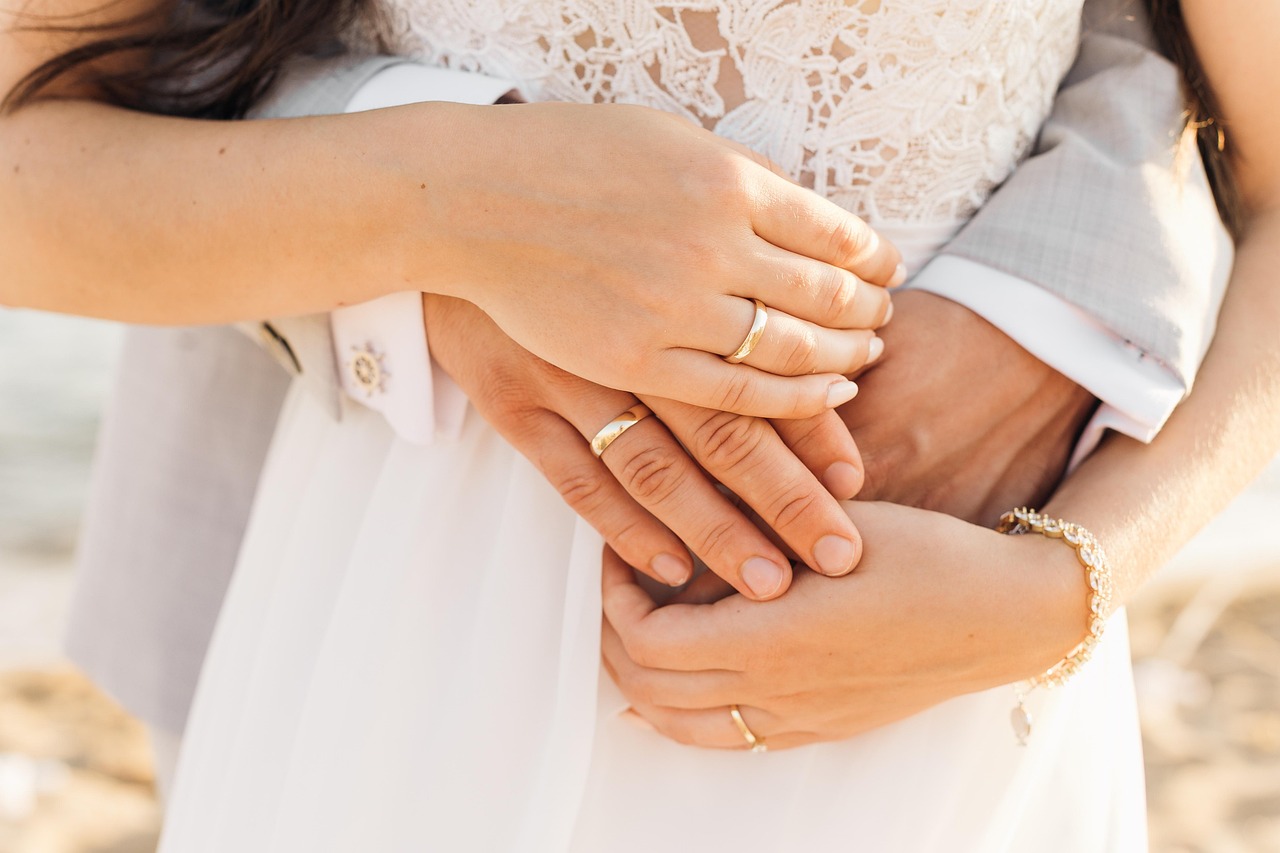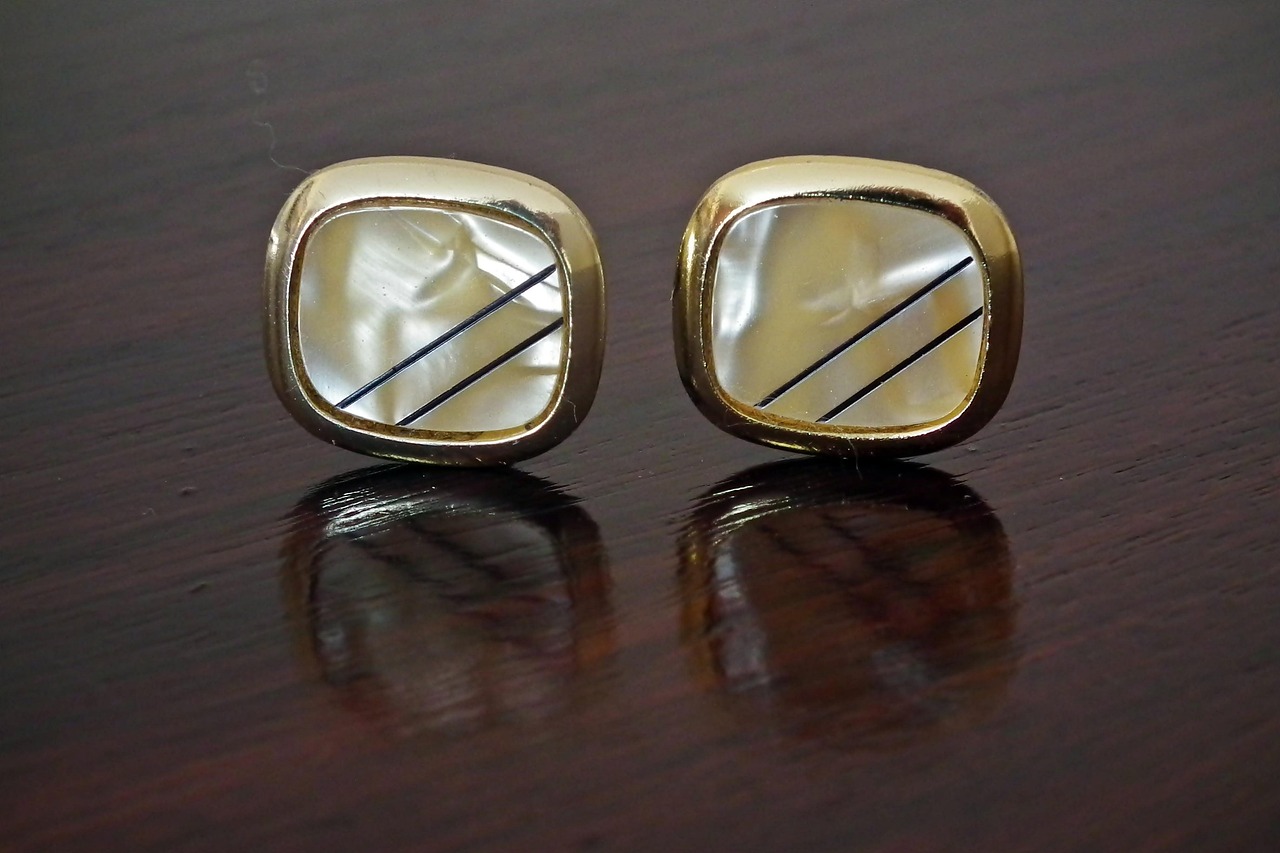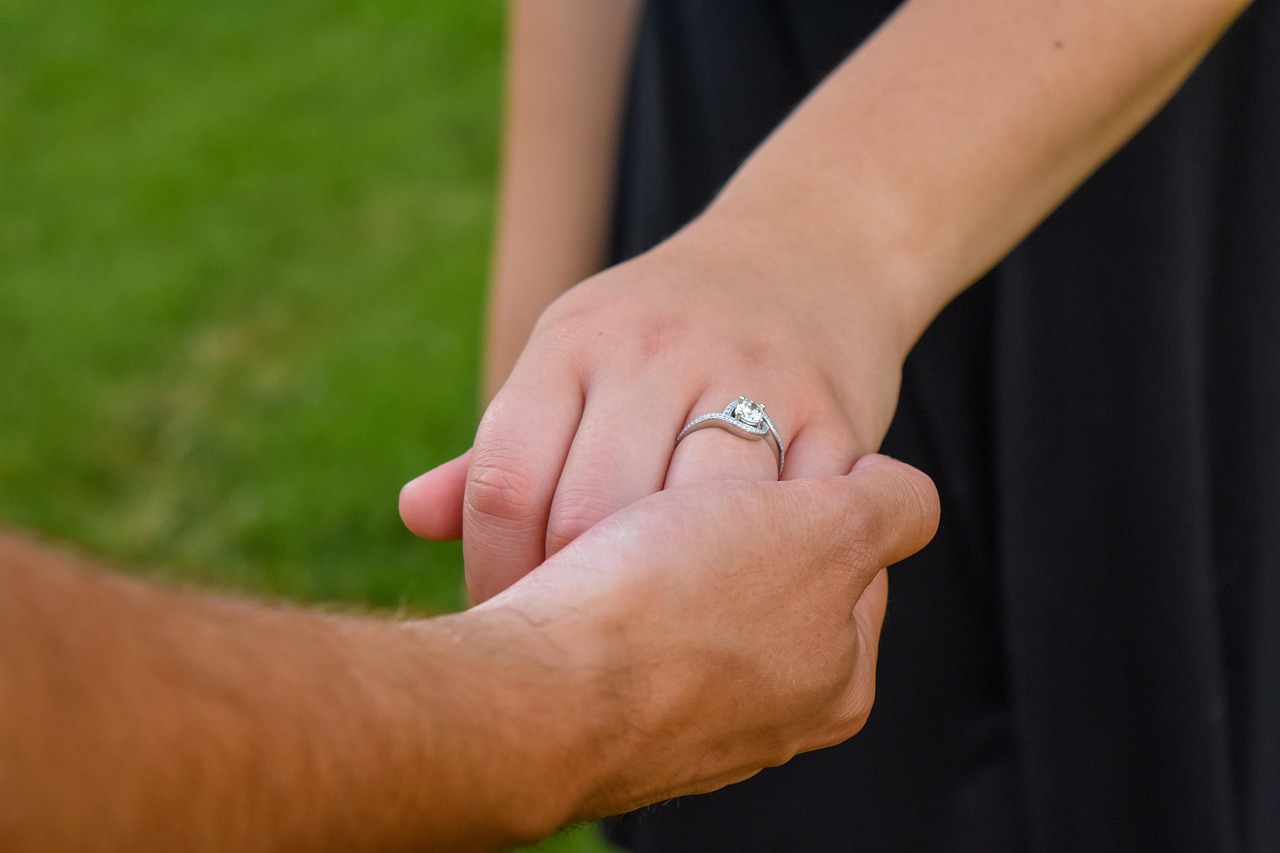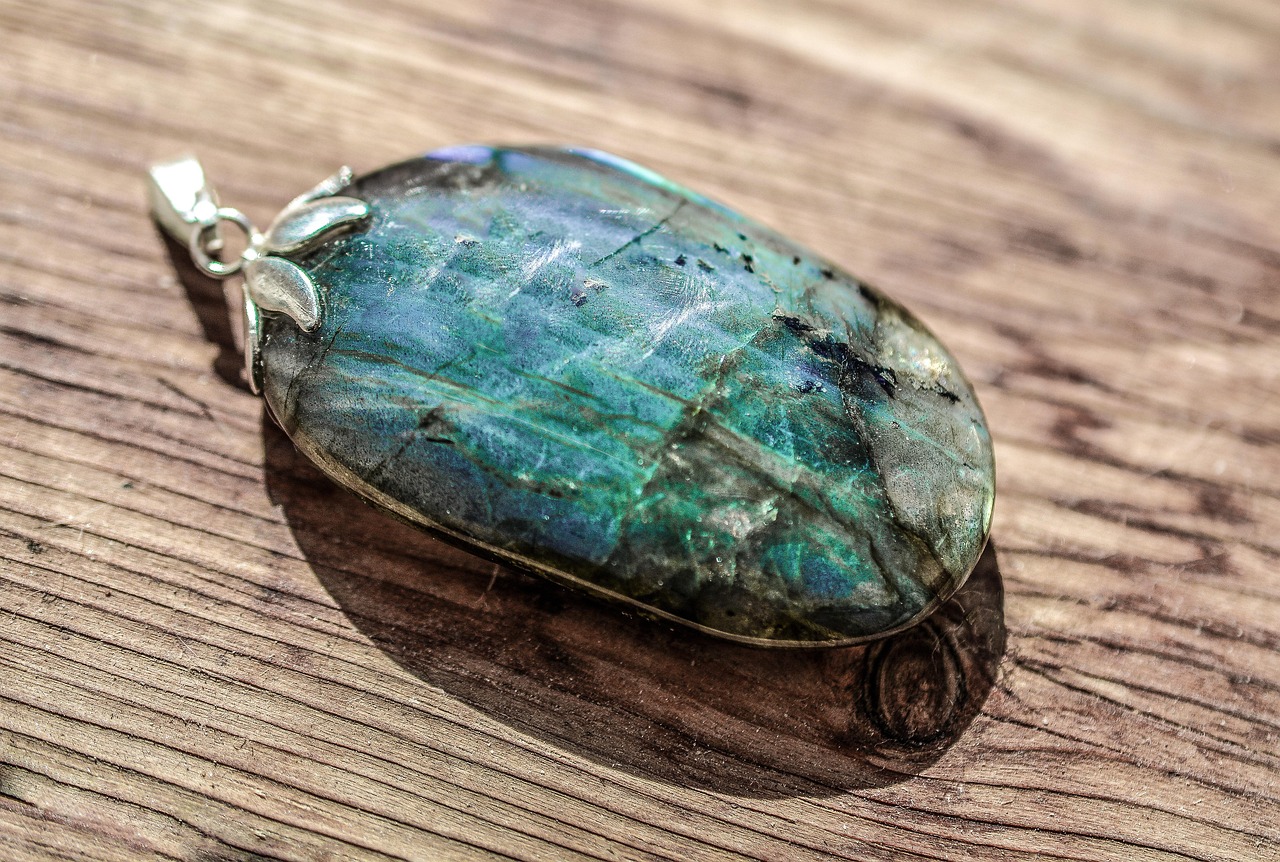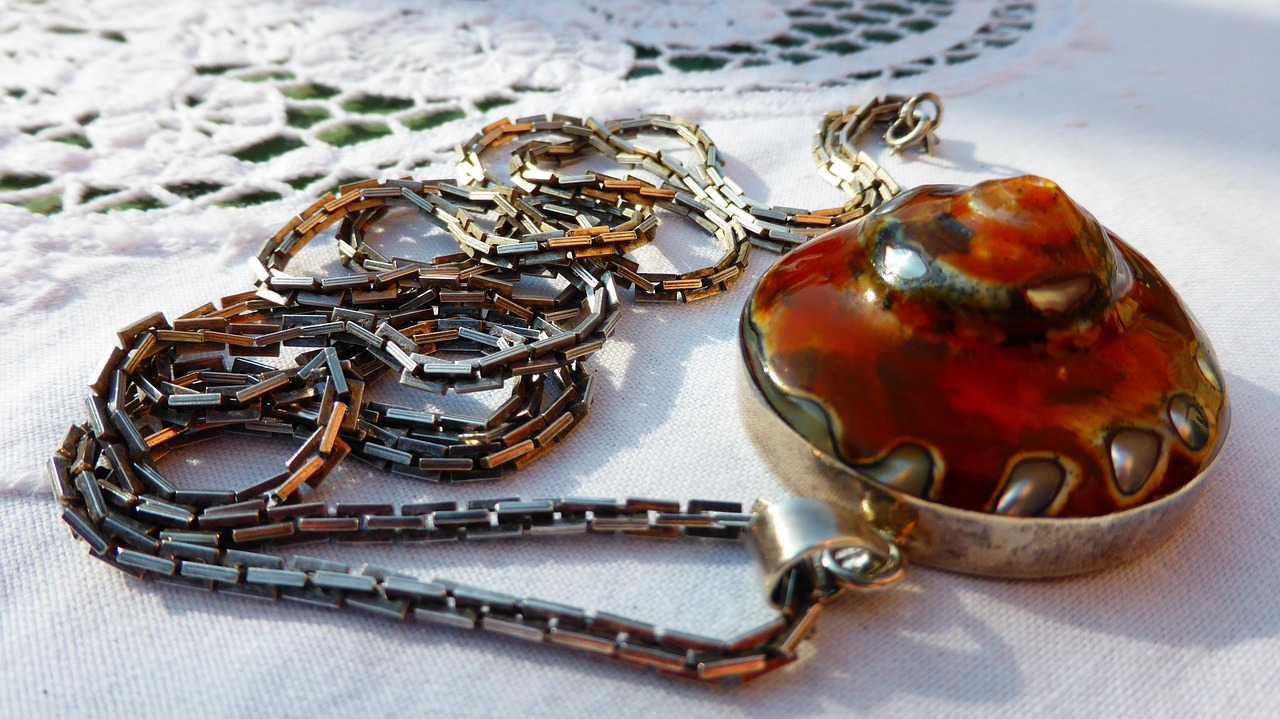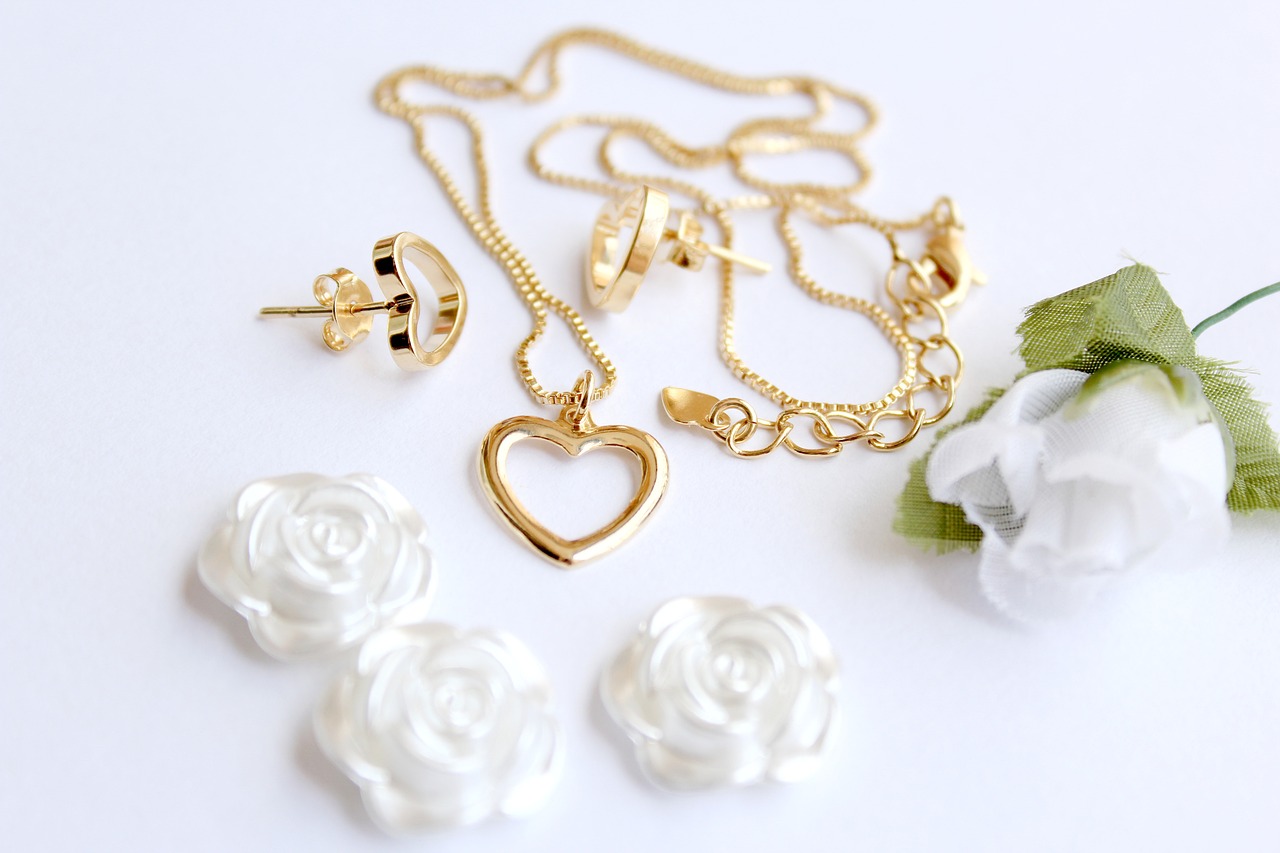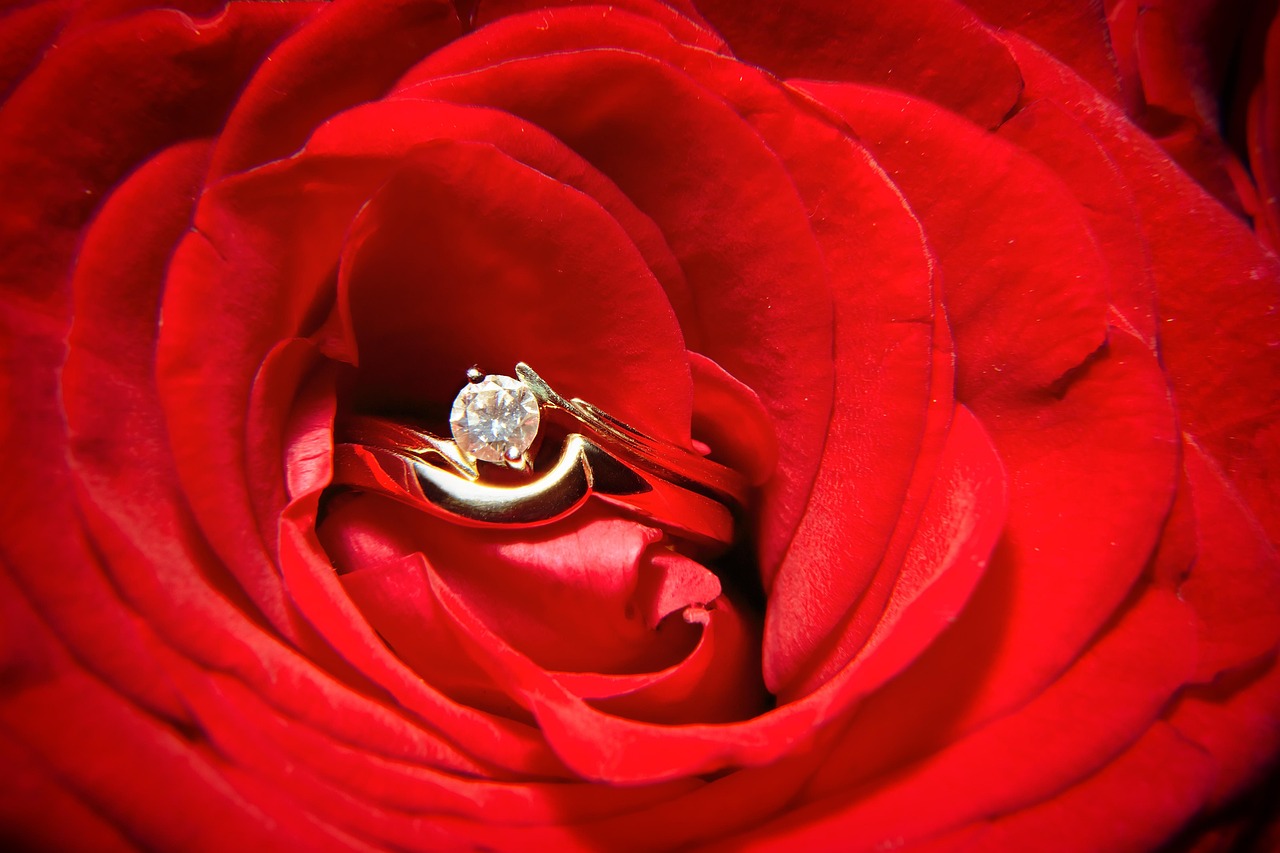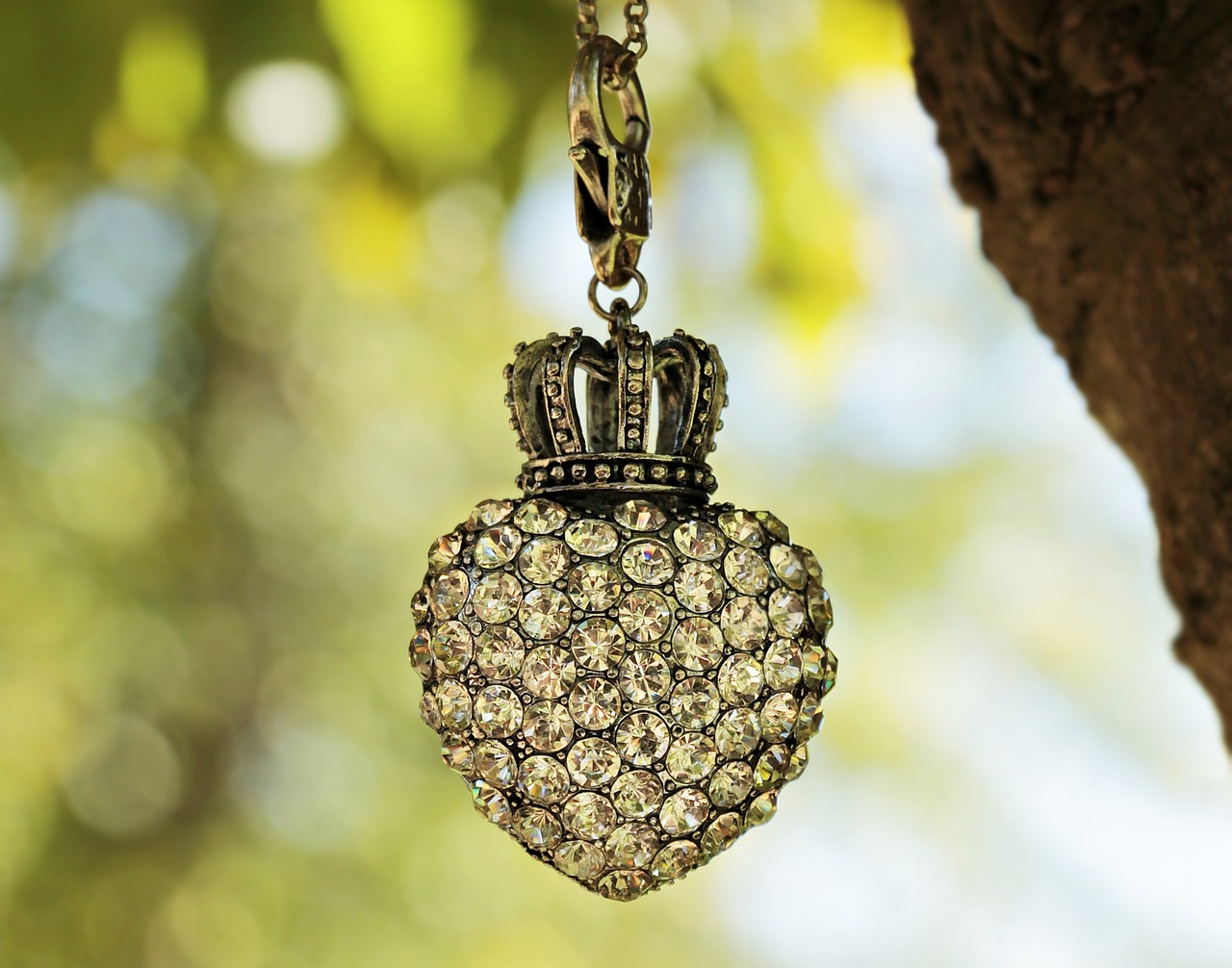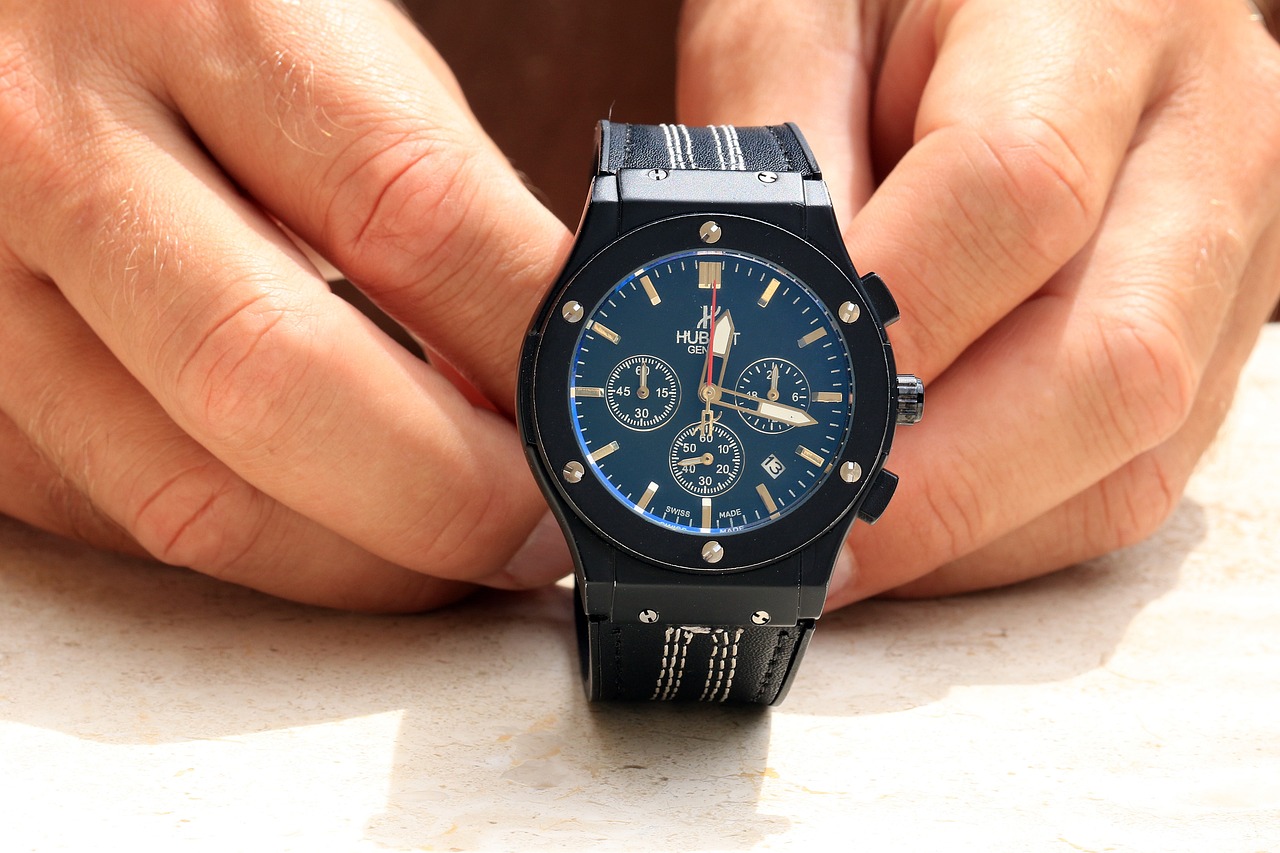Explore the rich tapestry of Celtic jewelry symbols, their historical significance, and the spiritual meanings they embody. This article delves into the intricate designs and their cultural relevance, offering insights into how these symbols have evolved over time and their continued importance in modern jewelry.
Celtic symbols are deeply rooted in history, representing various aspects of life, nature, and spirituality. Understanding these symbols is essential for appreciating their significance in jewelry. Some of the most recognized symbols include:
- Celtic Knots
- Claddagh Ring
- Celtic Cross
- Tree of Life
The Celtic knot, characterized by its endless loops, symbolizes eternity and interconnectedness. Its origins can be traced back to ancient Celtic art, where it was used to signify the unbreakable bonds of love and faith. In jewelry, the Celtic knot serves as a reminder of the eternal cycle of life.
Celtic knots come in various designs, each with unique interpretations. Popular types include:
- Triquetra: Represents the interconnectedness of mind, body, and spirit.
- Endless Knot: Symbolizes the eternal cycle of life and rebirth.
The Claddagh ring is a traditional Irish symbol of love, loyalty, and friendship. It features two hands holding a heart, topped with a crown, each element carrying its own significance:
- Heart: Love
- Hands: Friendship
- Crown: Loyalty
The way the Claddagh ring is worn can convey different messages about one’s relationship status. Wearing it on the right hand with the heart facing out indicates that the wearer is single, while wearing it on the left hand with the heart facing in signifies a committed relationship.
Celtic crosses are rich in symbolism, representing the intersection of the earthly and the divine. They are often seen as a bridge between the physical world and the spiritual realm, embodying the belief in eternal life.
Today, Celtic crosses continue to inspire jewelry designs, with contemporary artisans incorporating these ancient symbols into various styles, maintaining their spiritual significance while appealing to modern aesthetics.
The Tree of Life symbolizes growth, strength, and interconnectedness in Celtic culture. It represents the relationship between the earth and the heavens, illustrating how all life is intertwined.
The roots and branches of the Tree of Life have deep meanings, reflecting life’s journey and spiritual growth. The roots symbolize stability and grounding, while the branches represent aspirations and reaching for the divine.
Celtic symbols are believed to carry healing properties, fostering well-being and spiritual growth. Many people incorporate these symbols into their meditation practices, using them as focal points for spiritual alignment and healing.
Personalizing Celtic symbols can enhance their spiritual impact. By choosing symbols that resonate personally, individuals can create meaningful connections through jewelry, fostering a deeper understanding of their own spiritual journeys.

What Are the Most Common Celtic Symbols?
Celtic symbols are not just decorative elements; they are a profound expression of the rich history and culture of the Celtic people. These symbols encapsulate various aspects of life, nature, and spirituality, making them an integral part of Celtic jewelry. By understanding these symbols, one can truly appreciate the depth and significance they hold in both historical and contemporary contexts.
The world of Celtic symbols is vast and intricate, with each symbol telling its own unique story. Here are some of the most prevalent symbols:
- Celtic Knot: Often recognized for its endless loops, the Celtic knot symbolizes eternity, interconnectedness, and the cycle of life. Its design reflects the belief that life is a continuous journey.
- Triquetra: This three-pointed symbol represents the unity of mind, body, and spirit. It is often used in jewelry to signify balance and harmony.
- Tree of Life: A powerful symbol of growth and interconnectedness, the Tree of Life illustrates the relationship between the physical and spiritual worlds. Its roots and branches represent life’s journey and the cycle of birth and rebirth.
- Claddagh: A symbol of love, loyalty, and friendship, the Claddagh ring features two hands holding a heart, topped with a crown. Its design conveys deep emotional connections.
- Celtic Cross: Combining the Christian cross with a circle, the Celtic cross symbolizes the intersection of heaven and earth, embodying spiritual protection and faith.
Each of these symbols carries profound meanings, reflecting the values and beliefs of Celtic culture. From the intricate knots to the powerful imagery of the Tree of Life, these symbols are often incorporated into jewelry, allowing wearers to connect with their heritage and the spiritual significance behind each design.
Celtic symbols in jewelry serve more than just an aesthetic purpose; they are imbued with layers of meaning that resonate with those who wear them. Jewelry featuring these symbols often acts as a personal talisman, offering protection, guidance, and a sense of identity. For many, wearing Celtic jewelry is a way to honor their ancestry and maintain a connection to their roots.
Moreover, the craftsmanship involved in creating these pieces enhances their value. Artisans meticulously design jewelry that not only showcases the beauty of Celtic symbols but also respects their historical and cultural significance. This attention to detail ensures that each piece is not just an accessory, but a meaningful representation of the wearer’s beliefs and values.
Beyond their aesthetic and cultural significance, Celtic symbols are believed to carry healing properties. Many practitioners incorporate these symbols into their spiritual practices, using them as focal points for meditation and reflection. The intricate designs can foster a sense of peace and well-being, helping individuals align with their inner selves.
Incorporating symbols like the Tree of Life or the Celtic Knot into meditation can enhance one’s spiritual journey. These symbols serve as reminders of the interconnectedness of all things, promoting a deeper understanding of one’s place in the universe. Personalizing these symbols through jewelry can further strengthen their impact, allowing individuals to create a unique connection that resonates with their personal experiences and beliefs.
In conclusion, Celtic symbols are a testament to a rich cultural heritage, embodying profound meanings that transcend time. Their presence in jewelry not only enhances aesthetic appeal but also serves as a bridge to the past, connecting wearers to their history and spirituality.
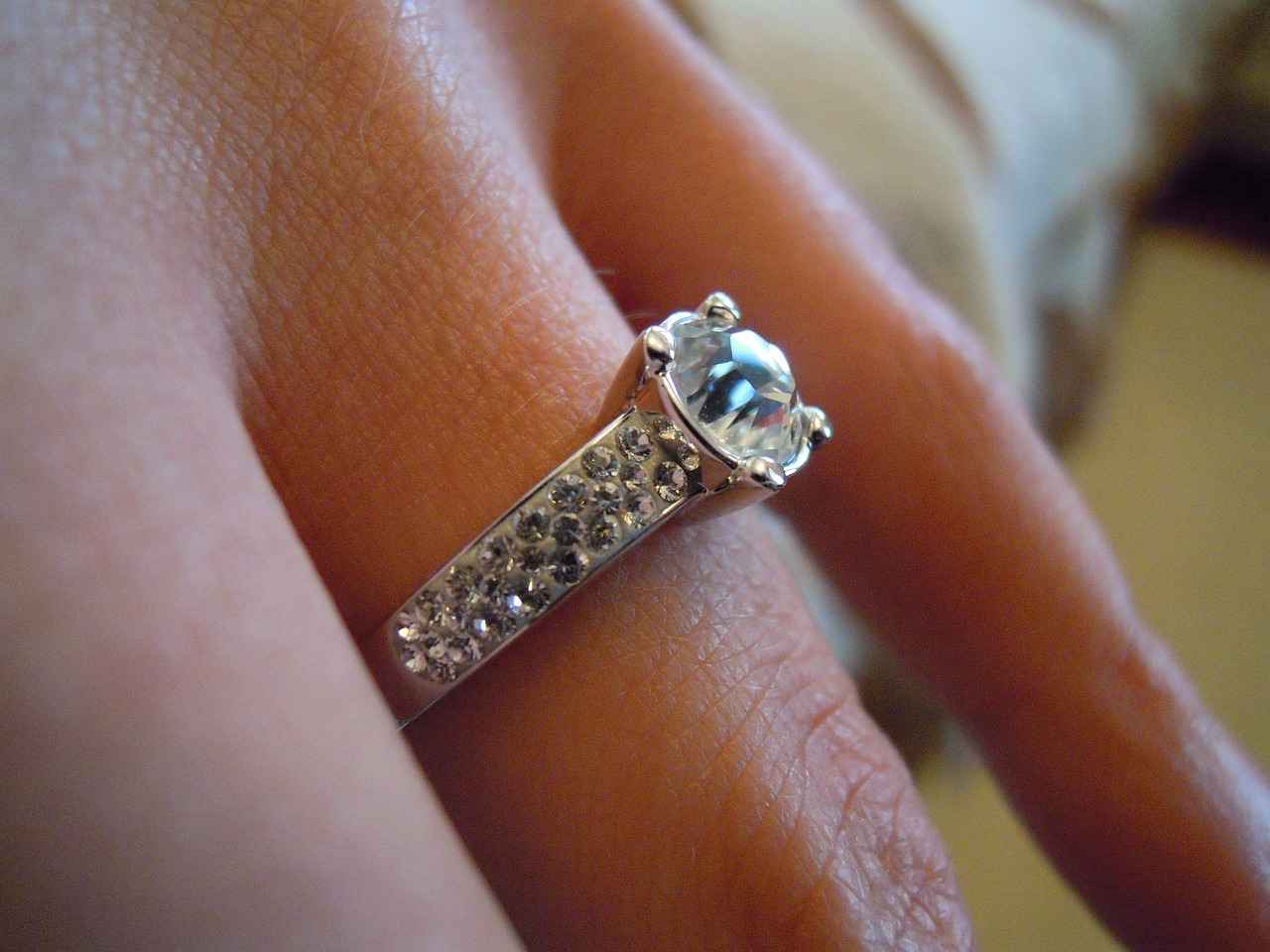
What Does the Celtic Knot Represent?
The Celtic knot, also known as the endless knot, is a mesmerizing symbol that has captivated many with its intricate and continuous loops. This iconic design embodies the essence of eternity and interconnectedness, reflecting the belief that life, love, and nature are all intertwined in a continuous cycle. The origins of the Celtic knot can be traced back to ancient Celtic art, where it was often featured in manuscripts, stone carvings, and jewelry, serving not only as a decorative element but also as a profound representation of spiritual beliefs.
The roots of the Celtic knot can be found in the early medieval period, particularly in the regions of Ireland, Scotland, and Wales. These knots were often used in religious contexts, symbolizing the connection between the earthly and the divine. They are frequently associated with Christianity, where they were incorporated into the designs of illuminated manuscripts and church decorations. The intricate patterns of the knots were believed to represent the infinite nature of God’s love and the eternal cycle of life and death.
Celtic knots have transcended their historical origins and are now widely used in jewelry, making them popular choices for those seeking meaningful adornments. Jewelry pieces featuring the Celtic knot often convey messages of love, loyalty, and unity. For instance, necklaces, bracelets, and rings adorned with these designs serve as reminders of the bonds that connect us to others and to the universe.
There are several variations of the Celtic knot, each with its unique interpretation:
- Endless Knot: Represents the eternal cycle of life, love, and nature.
- Triquetra: Symbolizes the interconnectedness of mind, body, and spirit.
- Square Knot: Often associated with protection and stability.
These different types of knots can be found in various jewelry designs, allowing individuals to choose pieces that resonate with their personal beliefs and experiences.
The spiritual meanings of the Celtic knot are profound. They are often viewed as symbols of eternal love and commitment. When given as a gift, a piece of jewelry featuring a Celtic knot can signify a promise or a bond that transcends time. This is particularly evident in wedding bands and engagement rings, where the endless loops symbolize the unbreakable bond between partners.
Many individuals wear Celtic knot jewelry not only for its aesthetic appeal but also for its spiritual significance. Some choose to incorporate these symbols into their daily lives as a form of spiritual protection or as a reminder of their values and connections. Additionally, Celtic knots are often used in meditation practices, where their intricate designs can help focus the mind and promote a sense of peace and unity.
In conclusion, the Celtic knot is much more than a decorative motif; it is a powerful symbol of interconnectedness and eternity. Whether worn as jewelry or used in spiritual practices, it serves as a reminder of the bonds that connect us all, making it a cherished emblem in both historical and modern contexts.
Types of Celtic Knots
Celtic knots are intricate designs that have captivated people for centuries, representing a rich tapestry of history and spirituality. Each knot consists of interwoven lines, creating a visual representation of the interconnectedness of life, eternity, and the cycle of nature. In this section, we will explore the various types of Celtic knots and their unique spiritual meanings, providing insights into their significance in Celtic culture.
There are numerous types of Celtic knots, each with its own distinct design and interpretation. Here are some of the most popular:
- Triquetra: This three-pointed knot symbolizes the interconnectedness of the mind, body, and spirit. It is often associated with the concept of the Holy Trinity in Christianity, representing the unity of Father, Son, and Holy Spirit. The Triquetra is commonly found in jewelry, signifying balance and harmony.
- Endless Knot: Also known as the eternal knot, this design features a continuous loop that has no beginning or end. It represents the eternal cycle of life, death, and rebirth, emphasizing the idea that all things are interconnected. In Celtic jewelry, the Endless Knot serves as a reminder of the continuity of life and the bonds we share with others.
- Square Knot: This design is characterized by its geometric shape and is often interpreted as a symbol of stability and strength. The Square Knot is believed to represent the four elements—earth, water, fire, and air—highlighting the balance of nature. It is frequently used in jewelry to convey a sense of grounding and resilience.
- Heart Knot: As the name suggests, this knot is shaped like a heart and symbolizes love and affection. It embodies the idea of eternal love, making it a popular choice for romantic gifts and wedding jewelry. The Heart Knot serves as a beautiful reminder of the bonds we cherish with loved ones.
- Shield Knot: This design is often associated with protection and safety. The Shield Knot is believed to ward off negative energies and provide a sense of security to the wearer. In Celtic culture, it is commonly used in talismans and protective jewelry.
Celtic knots are not only visually stunning but also carry profound meanings that resonate with many. They are frequently incorporated into various types of jewelry, including necklaces, bracelets, and rings. By wearing these symbols, individuals can connect with their heritage and express their values and beliefs.
Jewelry designers often blend traditional Celtic knot designs with modern aesthetics, allowing for a unique fusion of history and contemporary style. This versatility makes Celtic knot jewelry appealing to a wide audience, from those who appreciate its historical significance to individuals seeking meaningful gifts for loved ones.
The spiritual meanings behind Celtic knots extend beyond their visual appeal. They embody concepts such as eternity, interconnectedness, and the cyclical nature of life. By understanding these interpretations, individuals can gain deeper insights into their own spiritual journeys.
For many, wearing Celtic knot jewelry serves as a daily reminder of their values and beliefs, encouraging them to embrace the interconnectedness of all life. Whether viewed as a symbol of love, protection, or unity, Celtic knots hold a special place in the hearts of those who cherish their meanings.
Triquetra: The Threefold Knot
The Triquetra, often referred to as the Threefold Knot, is a powerful symbol in Celtic culture that embodies the profound concept of interconnectedness. It represents the unity of mind, body, and spirit, illustrating how these elements are intricately linked and essential for holistic well-being. This ancient symbol has transcended time, finding its way into various forms of art, particularly in the realm of jewelry, where it serves as a reminder of balance and harmony.
The Triquetra is not just a decorative design; it holds significant spiritual meaning. Each of the three loops of the knot can represent various triads, such as life, death, and rebirth, or past, present, and future. This multifaceted nature makes the Triquetra a versatile symbol, resonating with individuals on different spiritual journeys.
Jewelry designers often incorporate the Triquetra into various pieces, including necklaces, bracelets, and earrings. The symbol can be found in both traditional and modern designs, allowing wearers to express their connection to Celtic heritage while embracing contemporary aesthetics. The Triquetra is frequently crafted from materials such as silver, gold, and even gemstones, enhancing its beauty and spiritual significance.
- Triquetra Pendants: Often worn close to the heart, these pendants serve as a personal talisman for many.
- Triquetra Rings: Symbolizing commitment and unity, these rings are popular choices for couples.
- Triquetra Bracelets: These pieces can be worn daily, serving as a constant reminder of the interconnectedness of life.
Many individuals who engage in spiritual practices find that the Triquetra enhances their meditative experiences. The symbol serves as a focal point, helping practitioners to align their thoughts and energies. It is often used in rituals aimed at achieving balance, inner peace, and spiritual growth.
Personalizing your Triquetra jewelry can deepen its meaning. Consider adding initials, birthstones, or other symbols that resonate with your personal journey. This customization transforms a beautiful piece into a unique representation of your life and beliefs.
When searching for authentic Triquetra jewelry, it is essential to choose reputable artisans or retailers who specialize in Celtic designs. Look for pieces that are handcrafted, as these are often imbued with more meaning and energy than mass-produced items. Online marketplaces, local craft fairs, and specialty jewelry stores are excellent places to start your search.
In conclusion, the Triquetra is more than just a captivating design; it is a meaningful symbol that resonates with many on a spiritual level. Its incorporation into jewelry allows individuals to carry a piece of this ancient wisdom with them, serving as a reminder of the balance and interconnectedness that is vital in our lives.
Endless Knot: A Symbol of Eternity
The Endless Knot, often referred to as the eternal knot, is a prominent symbol in Celtic culture that embodies the concept of infinity and the interconnectedness of life. This intricate design features a series of loops and twists that create a continuous pattern, symbolizing the unending cycle of life, death, and rebirth. The Endless Knot serves as a reminder that all aspects of existence are intertwined, emphasizing the importance of harmony and balance in our lives.
The origins of the Endless Knot can be traced back to ancient Celtic traditions, where it was often used in religious and spiritual contexts. This symbol is believed to represent the relationship between the physical and spiritual realms, illustrating how our actions and choices in the material world can have lasting effects on our spiritual journey. The Endless Knot is also associated with eternal love and commitment, making it a popular motif in jewelry designs.
The Endless Knot appears in various forms of Celtic jewelry, including necklaces, bracelets, and rings. Artisans skillfully weave this symbol into their designs, often combining it with other Celtic motifs such as the Tree of Life or the Triquetra. This combination not only enhances the aesthetic appeal of the jewelry but also deepens its spiritual significance. Wearing such pieces serves as a personal reminder of the connections we share with others and the cycles of life we experience.
- Simple Endless Knot: A basic design featuring a straightforward loop pattern, often used in minimalist jewelry.
- Complex Endless Knot: A more intricate version that includes additional elements like spirals and interwoven patterns, symbolizing deeper connections.
- Endless Knot with Gemstones: Incorporating gemstones into the design adds color and personal meaning, enhancing the overall symbolism of the piece.
In contemporary society, the Endless Knot continues to hold significant meaning. It is often seen as a symbol of unity and eternal love, making it a favored choice for engagement and wedding rings. Additionally, many individuals wear this symbol as a reminder of their personal journeys, reflecting the growth and transformation that life presents. The Endless Knot encourages wearers to embrace the present moment while recognizing the importance of their past experiences.
To create a personal connection with the Endless Knot, consider wearing it as a piece of jewelry that resonates with your life journey. Reflect on the relationships and experiences that have shaped you. Engaging in meditation while focusing on the symbol can also enhance its significance, helping you to foster a sense of inner peace and understanding of your life’s interconnectedness.
In summary, the Endless Knot is more than just a decorative element in Celtic jewelry; it is a profound symbol that speaks to the heart of human experience. By understanding its significance and embracing its beauty, we can appreciate the rich tapestry of Celtic culture and the enduring messages it conveys.
How Do Animals Feature in Celtic Jewelry?
Animals hold a profound significance in Celtic symbolism, reflecting a deep connection between nature and spirituality. This rich tapestry of animal representation is often found in Celtic jewelry, where each creature embodies specific traits and beliefs. In this section, we will explore some of the most prominent animal symbols that grace Celtic jewelry, revealing their meanings and cultural relevance.
Many animals appear in Celtic art and jewelry, each chosen for its unique attributes. Some of the most common include:
- Wolf – Symbolizing loyalty, intuition, and guardianship.
- Eagle – Representing strength, courage, and vision.
- Stag – A symbol of renewal, growth, and nobility.
- Bear – Associated with strength, protection, and bravery.
- Hare – A symbol of fertility, intuition, and the moon.
The wolf is revered in Celtic mythology as a powerful and intelligent creature. In jewelry, the wolf often signifies loyalty and guardianship. It is believed that wearing wolf motifs can enhance one’s instincts and promote a sense of protection over loved ones. The wolf’s connection to the moon adds another layer of meaning, representing the duality of light and dark.
The eagle stands as a majestic symbol of strength and freedom in Celtic culture. Often depicted soaring high, the eagle represents a connection to the divine and the ability to see the bigger picture in life. In jewelry, eagle designs can inspire wearers to embrace their inner strength and pursue their goals with confidence.
The stag is a powerful symbol of renewal and nobility, often associated with the cycle of life and death. In Celtic mythology, the stag is seen as a guide to the otherworld, making it an important figure in spiritual journeys. Jewelry featuring stags can serve as a reminder of one’s inner strength and the importance of personal growth.
The bear is a symbol of strength and protection, embodying the fierce spirit of the warrior. In Celtic tradition, bears are often associated with the earth and the power of nature. Jewelry designs featuring bears can inspire courage and resilience, making them popular choices for those seeking to harness their inner strength.
The hare is a fascinating creature in Celtic symbolism, often linked to fertility and intuition. As a creature of the moon, the hare embodies the cycles of life and is believed to enhance one’s intuitive abilities. Jewelry that incorporates hare motifs can serve as a reminder to trust one’s instincts and embrace the flow of life.
In conclusion, animals in Celtic jewelry are not merely decorative elements; they carry deep spiritual meanings and connections to the natural world. Each animal symbol serves as a reminder of the qualities we can embody and the lessons we can learn from nature. By incorporating these symbols into jewelry, wearers can connect with their heritage and the rich tapestry of Celtic culture.
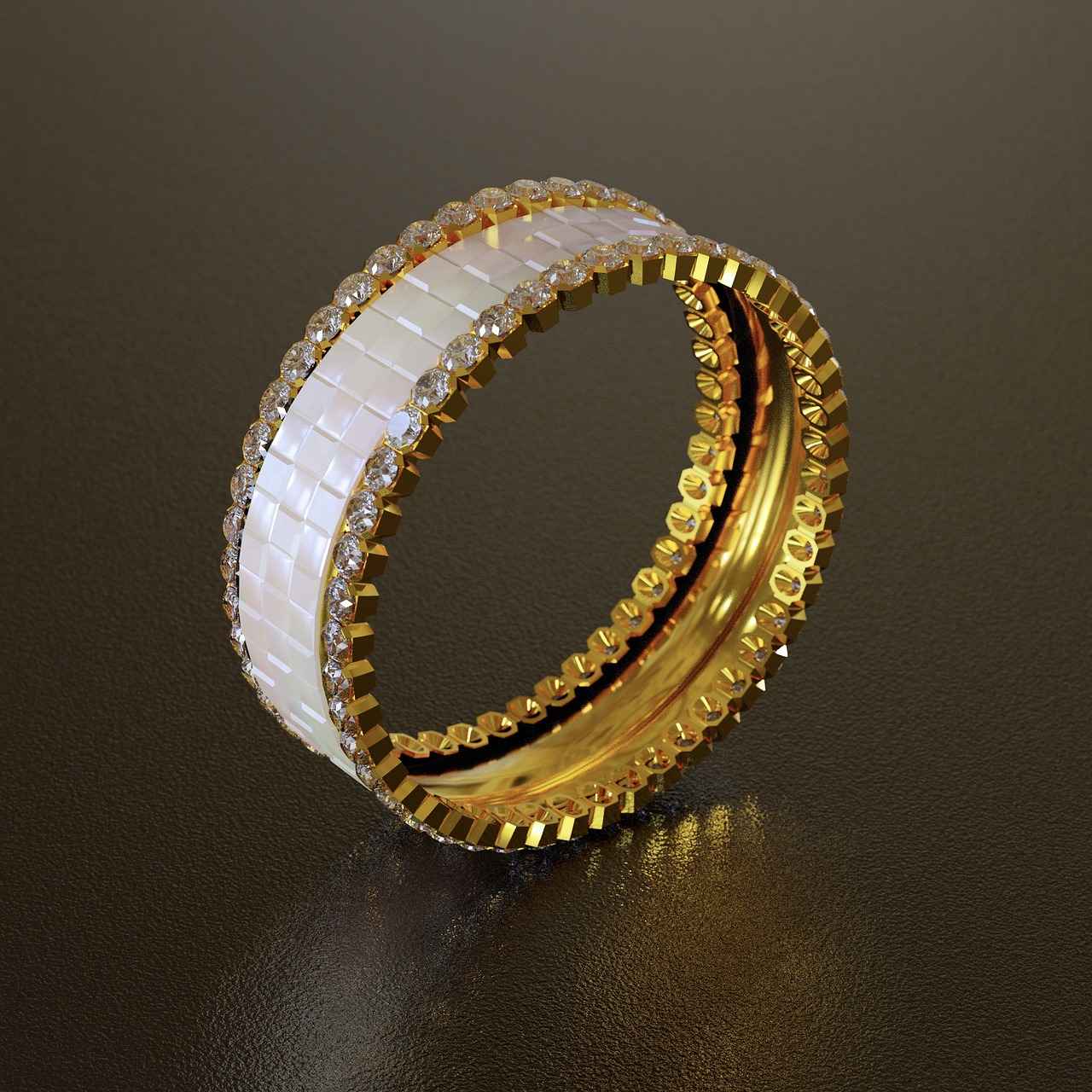
What Is the Meaning of the Claddagh Ring?
The Claddagh ring is more than just a piece of jewelry; it is a cherished symbol of love, loyalty, and friendship, deeply rooted in Irish culture. This iconic ring, characterized by its unique design, has a rich history that tells a story of connection and commitment. Understanding its significance can enhance the appreciation of this timeless piece.
The Claddagh ring originated in the small fishing village of Claddagh, near Galway, Ireland, in the 17th century. Legend has it that the ring was created by a goldsmith named Richard Joyce, who was captured by pirates and sold into slavery. Upon his return to Ireland, he crafted the ring as a symbol of his enduring love for his beloved. This tale encapsulates the ring’s essence, intertwining themes of love and fidelity.
The Claddagh ring features three distinct elements: the heart, the crown, and the hands. Each component carries its own significance:
- Heart: Represents love.
- Crown: Symbolizes loyalty.
- Hands: Signify friendship.
This triad of symbols works together to convey a message of unity and commitment, making the ring a popular choice for engagement and wedding jewelry.
The way the Claddagh ring is worn can communicate one’s relationship status. Traditionally, wearing the ring on the right hand with the heart facing outward signifies that the wearer is single or open to love. Conversely, wearing it on the left hand with the heart facing inward indicates that the wearer is in a committed relationship or married. This custom adds a layer of meaning to the ring, making it a powerful symbol of personal connection.
Today, the Claddagh ring transcends its traditional roots and is embraced by people worldwide. It is often given as a gift to friends and family, symbolizing deep bonds of affection. Many choose to personalize their rings with engravings or additional gemstones, enhancing their sentimental value. The ring has also found a place in popular culture, appearing in films and literature, further solidifying its status as a symbol of love and friendship.
The Claddagh ring is not just a piece of jewelry; it embodies the spirit of Irish culture and values. It serves as a reminder of the importance of love, loyalty, and friendship in relationships. The ring’s design and the stories behind it connect wearers to their heritage and traditions, making it a meaningful artifact for generations.
In summary, the Claddagh ring is a profound symbol that encapsulates the essence of love, loyalty, and friendship. Its rich history, intricate design, and modern significance make it a timeless piece that resonates with individuals across the globe. Whether worn as a personal statement or given as a heartfelt gift, the Claddagh ring continues to inspire and connect people through its enduring message.
Design Elements of the Claddagh Ring
The Claddagh ring is a beautiful representation of love, loyalty, and friendship, deeply rooted in Irish culture. Its design is not merely decorative; each element within the ring carries significant meaning that reflects the values and emotions associated with these bonds. In this section, we will explore the three key components of the Claddagh ring: the heart, the crown, and the hands, each symbolizing different aspects of relationships and commitments.
At the center of the Claddagh ring lies the heart, which is universally recognized as a symbol of love. This element signifies not only romantic love but also the profound affection shared among friends and family. The heart’s presence in the Claddagh ring emphasizes the importance of love as the foundation of any meaningful relationship. Furthermore, it serves as a reminder that love should be given freely and cherished deeply, making it a central theme in Irish culture.
The crown atop the heart represents loyalty and fidelity. In the context of the Claddagh ring, it signifies the commitment to uphold these values in relationships. The crown’s regal design serves as a reminder that loyalty is a noble trait, one that should be honored and respected. This element highlights the importance of trust and devotion, essential qualities for maintaining strong and lasting connections with loved ones.
The hands that hold the heart are a powerful symbol of friendship and partnership. They signify the bond between individuals, illustrating the idea of support and unity. The hands’ embrace of the heart conveys a message of protection and care, reinforcing the notion that true friendships and partnerships are built on mutual respect and understanding. In essence, the hands symbolize the act of giving and receiving love, highlighting the importance of companionship in any relationship.
The combination of the heart, crown, and hands in the Claddagh ring creates a cohesive symbol of love, loyalty, and friendship. Together, they convey a message that resonates deeply within Irish culture, making the Claddagh ring a cherished piece of jewelry for many. Whether given as a token of love, a promise of fidelity, or a celebration of friendship, the ring carries a profound meaning that transcends its physical form.
The way one wears the Claddagh ring can also reflect their relationship status and intentions. For instance, wearing the ring on the right hand with the heart facing outward signifies that the wearer is single and open to love. Conversely, wearing it on the left hand with the heart facing inward indicates that one is in a committed relationship. This practice adds another layer of significance to the ring, as it serves not only as a piece of jewelry but also as a communicator of personal feelings and situations.
In conclusion, the Claddagh ring is a rich symbol of love, loyalty, and friendship, with each design element—the heart, crown, and hands—carrying its own unique significance. Understanding these components enhances the appreciation of this beautiful piece of jewelry, making it a timeless emblem of enduring relationships.
How Is the Claddagh Ring Worn?
The Claddagh ring, a cherished symbol of love, loyalty, and friendship, carries profound meaning not only through its design but also through the way it is worn. This beautiful piece of jewelry is steeped in Irish tradition and conveys a unique message about the wearer’s relationship status, making it a significant cultural artifact.
- Worn on the Right Hand with the Heart Facing Out: When the Claddagh ring is worn on the right hand with the heart facing outward, it signifies that the wearer is single and open to love. This position suggests a readiness to embrace new relationships and share one’s heart.
- Worn on the Right Hand with the Heart Facing In: If the ring is worn on the right hand with the heart facing inward, it indicates that the wearer is in a relationship. This orientation symbolizes a commitment to a partner and a connection that is both emotional and romantic.
- Worn on the Left Hand with the Heart Facing In: When the Claddagh ring is worn on the left hand with the heart facing inward, it conveys that the wearer is engaged or married. This signifies a deep bond of love and loyalty between partners, representing a lifelong commitment.
The customs surrounding the Claddagh ring are not only meaningful but also serve as a conversation starter. Many people are intrigued by the symbolism and the stories behind the ring, making it a popular gift among friends and lovers alike.
Understanding the Symbolism
Each component of the Claddagh ring—the heart, the hands, and the crown—holds significant meaning. The heart represents love, the hands symbolize friendship, and the crown signifies loyalty. Together, they form a powerful emblem of the values that are essential in any relationship.
In addition to its romantic connotations, the Claddagh ring is often given as a token of friendship or familial love, making it a versatile piece of jewelry. It is not uncommon to see friends exchanging these rings as a sign of their bond, reinforcing the idea that the Claddagh ring transcends romantic relationships.
Cultural Significance
The Claddagh ring’s origins trace back to the fishing village of Claddagh in Galway, Ireland. Its design has been passed down through generations, and it remains a beloved symbol of Irish heritage. Understanding the cultural significance of the ring adds depth to its meaning. Wearing the ring is not just a fashion statement; it is a way to connect with one’s roots and celebrate the values of love, loyalty, and friendship that are central to Irish culture.
In conclusion, the way in which the Claddagh ring is worn speaks volumes about the wearer’s relationship status and intentions. Whether it is worn to signify being single, in a relationship, or married, this beautiful piece of jewelry carries with it a rich history and a meaningful message. By understanding the customs and symbolism associated with the Claddagh ring, one can appreciate its beauty and significance even more.

What Spiritual Meanings Do Celtic Crosses Hold?
The Celtic cross is a profound symbol that embodies the rich cultural and spiritual heritage of the Celtic people. This emblem, characterized by its distinct design featuring a cross with a circular ring, represents the convergence of the earthly and the divine. In this section, we will explore the spiritual meanings associated with Celtic crosses and their significance in jewelry.
The circular ring of the Celtic cross is often interpreted as a symbol of eternity and the unending nature of life. It signifies the idea that life continues beyond death, linking the physical world to the spiritual realm. This representation is particularly meaningful in jewelry, where the cross serves as a reminder of one’s faith and connection to the divine.
Celtic crosses are commonly crafted into various types of jewelry, including necklaces, bracelets, and rings. These pieces not only serve as decorative items but also carry deep spiritual significance. Wearing a Celtic cross can be a personal expression of faith, a token of remembrance, or a symbol of protection. Many people choose to wear these pieces during significant life events, such as weddings or christenings, to invoke blessings and spiritual guidance.
The origins of the Celtic cross can be traced back to early Christianity in Ireland, where it was used to symbolize the fusion of pagan and Christian beliefs. The cross represents the teachings of Christ while the circular element reflects the sun, a vital symbol in ancient Celtic culture. Understanding this historical context enriches the appreciation of the cross as a symbol of unity between different belief systems.
In contemporary times, artisans continue to reinterpret the Celtic cross in innovative ways. Modern designs may incorporate various materials such as silver, gold, and even gemstones, enhancing their aesthetic appeal while maintaining their spiritual essence. These modern interpretations often resonate with a broader audience, bridging the gap between ancient traditions and modern spirituality.
The symbolism of the Celtic cross encourages individuals to reflect on their spiritual journey. Many wearers find that the cross serves as a source of inspiration and motivation, reminding them of their values and beliefs. This connection can foster a sense of peace and purpose, especially during challenging times.
In meditation practices, the Celtic cross can be a powerful focal point. Practitioners often visualize the cross to enhance their spiritual alignment and deepen their connection to the divine. By incorporating the cross into meditation, individuals can explore themes of balance, unity, and wholeness, allowing for a more profound spiritual experience.
Personalizing Celtic cross jewelry can enhance its spiritual significance. Many choose to engrave names, dates, or meaningful phrases onto their pieces, creating a unique connection to their personal journey. This customization transforms a simple piece of jewelry into a cherished keepsake, symbolizing one’s faith and life experiences.
In summary, the Celtic cross is not just a decorative element in jewelry; it is a powerful symbol of spirituality and connection. Its meanings are deeply rooted in history and culture, making it a significant piece for those who seek to express their beliefs and values through adornment.
Historical Context of Celtic Crosses
The Celtic cross is a powerful symbol that transcends mere decoration; it embodies a rich historical narrative that reflects the intertwining of Celtic culture and Christianity. To truly appreciate the significance of these crosses, it is essential to delve into their historical context, exploring their origins and how they have evolved over centuries.
The origins of the Celtic cross can be traced back to early Christian missionaries in Ireland and Britain during the 5th century. These missionaries sought to spread Christianity among the Celtic tribes, and they often used familiar symbols to convey their messages. The cross, a symbol of Christ’s sacrifice, was combined with the circle, representing eternity and God’s everlasting love. This fusion created the distinctive Celtic cross we recognize today.
Initially, Celtic crosses were simple stone carvings, often found in monastic sites. As time progressed, particularly during the Middle Ages, these crosses became more elaborate. They featured intricate designs that included knotwork, spirals, and biblical scenes, reflecting the artistry and spirituality of the period. The introduction of Romanesque and Gothic architectural styles further influenced their design, leading to the creation of monumental crosses that served both as religious symbols and as markers of cultural identity.
The circle in the Celtic cross is not merely decorative; it holds profound meaning. It represents the union of heaven and earth, signifying the connection between the divine and the mortal realm. This aspect of the Celtic cross highlights the belief in the interconnectedness of life, a core principle in Celtic spirituality. The circle also symbolizes eternity, reinforcing the idea of life after death and the cyclical nature of existence.
Celtic crosses are primarily found in regions with a strong Celtic heritage, such as Ireland, Scotland, and Wales. Many of these crosses are erected in graveyards, serving as markers for the deceased. Notable examples include the High Crosses of Ireland, which are often adorned with biblical scenes and intricate carvings. These crosses not only serve as memorials but also as a testament to the artistry and devotion of the craftsmen who created them.
Today, the influence of Celtic crosses extends beyond historical sites into the realm of modern jewelry. Artisans incorporate these symbols into various pieces, from pendants to rings, allowing individuals to carry a piece of this rich heritage with them. The symbolism of the Celtic cross resonates with many, representing faith, protection, and a connection to one’s ancestry.
In contemporary spiritual practices, Celtic crosses are often used as tools for meditation and reflection. Their intricate designs encourage mindfulness and contemplation, allowing individuals to connect with their spiritual beliefs. Wearing a Celtic cross can serve as a reminder of one’s faith and the importance of the spiritual journey.
Understanding the historical context of Celtic crosses not only enhances their meaning but also deepens our appreciation for their beauty and significance. As we explore these symbols, we uncover layers of history, culture, and spirituality that continue to inspire and resonate with people today.
Modern Interpretations of Celtic Crosses
The Celtic cross is a profound symbol that has transcended time and culture, evolving from its historical roots into a contemporary emblem of spirituality and artistry. Today, these crosses are not only cherished for their ancient meanings but also for their modern interpretations, which capture the essence of both tradition and innovation.
In today’s context, the Celtic cross represents a blend of faith, heritage, and artistic expression. Contemporary artisans draw from the rich history of these symbols, infusing them with personal and modern meanings. The circular shape of the cross is often interpreted as a representation of eternity, while the intersecting lines symbolize the connection between the earthly and the divine.
Artisans today are reimagining the traditional Celtic cross through various mediums, including metalwork, wood carving, and glass art. By incorporating modern design techniques and materials, these artists create pieces that resonate with both ancient symbolism and contemporary aesthetics. For example, the use of recycled materials not only pays homage to the past but also promotes sustainability.
- Minimalist Designs: Simple, sleek lines that focus on the essence of the cross.
- Intricate Patterns: Detailed engravings that highlight traditional Celtic knotwork.
- Mixed Materials: Combinations of metals, stones, and other materials to create unique textures.
Many artisans showcase their work at local craft fairs, online marketplaces, and specialty jewelry stores. Websites dedicated to handmade goods often feature Celtic cross designs that reflect modern interpretations while honoring the symbol’s rich history. Additionally, social media platforms serve as a gallery for emerging artists to share their creations and connect with potential buyers.
Many individuals today incorporate the Celtic cross into their spiritual practices. It serves as a reminder of their faith and spiritual journey. Whether worn as jewelry or displayed in homes, these crosses are believed to offer protection and guidance. The symbolism of the cross continues to inspire those seeking a deeper connection to their roots and beliefs.
As we explore the modern interpretations of the Celtic cross, it becomes evident that these symbols are more than just decorative items; they are a bridge between the past and the present. By embracing both ancient traditions and contemporary designs, artisans are ensuring that the legacy of the Celtic cross endures, resonating with new generations who seek meaning and connection in their lives.
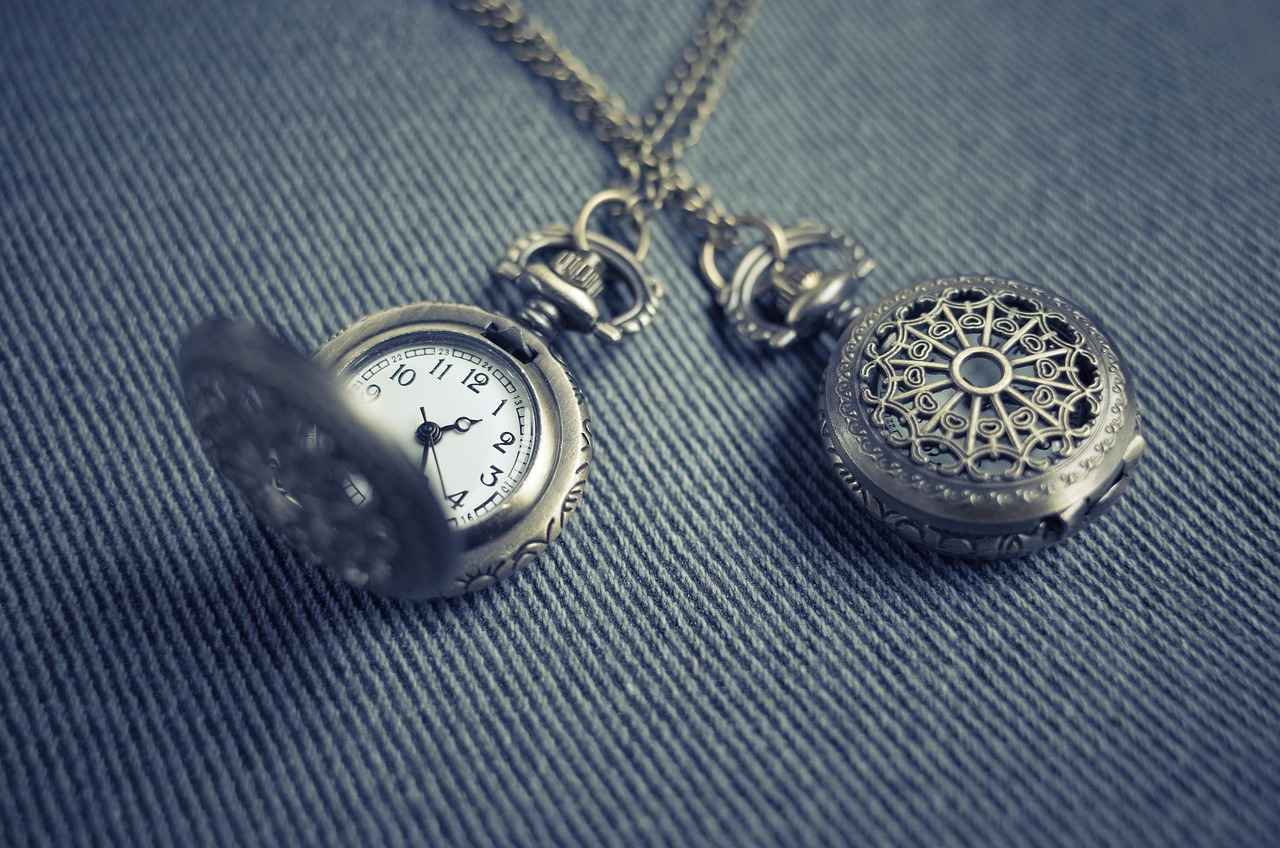
Why Is the Tree of Life Important in Celtic Culture?
The Tree of Life holds a revered place in Celtic culture, embodying profound meanings of growth, strength, and interconnectedness. This ancient symbol is not only a representation of life but also a reflection of the deep spiritual beliefs that permeate Celtic traditions. As we delve into the significance of the Tree of Life, we will explore its representation in jewelry and its broader cultural context.
In Celtic mythology, the Tree of Life symbolizes the connection between the earth and the cosmos. It is often depicted with roots that delve deep into the earth and branches that stretch towards the heavens. This imagery signifies the interconnectedness of all living things and the balance of nature. The tree serves as a reminder that life is a continuous cycle, where every being is linked to one another.
The roots of the Tree of Life represent stability and nourishment, grounding individuals in their heritage and personal history. Conversely, the branches symbolize growth and aspiration, reaching out towards new possibilities and experiences. This duality encapsulates the essence of life’s journey, where one must remain rooted yet also strive for progress.
The Tree of Life is a popular motif in various types of jewelry, including necklaces, bracelets, and rings. These pieces often feature intricate designs that highlight the tree’s roots and branches, making them visually striking and symbolically rich. Wearing Tree of Life jewelry serves as a personal reminder of one’s connection to nature and the universe.
- Necklaces: Often worn close to the heart, they symbolize personal growth and connection.
- Bracelets: These can represent unity and the bonds between loved ones.
- Rings: Typically worn as a statement piece, they signify commitment to one’s roots and values.
The Tree of Life is frequently chosen as a gift for significant occasions such as weddings, birthdays, and anniversaries. Its universal message of love, growth, and connection makes it a meaningful present that resonates with recipients. Gifting Tree of Life jewelry can symbolize the bond between the giver and the receiver, representing shared experiences and future aspirations.
Today, the Tree of Life continues to inspire contemporary artisans who incorporate this timeless symbol into their designs. Modern interpretations often blend traditional Celtic motifs with new materials and styles, creating unique pieces that appeal to a wide audience. This evolution reflects the enduring relevance of the Tree of Life in today’s world, where individuals seek symbols that resonate with their personal journeys.
In conclusion, the Tree of Life stands as a powerful emblem in Celtic culture, representing the intricate web of life and the strength found in our connections. Its enduring presence in jewelry serves not only as a fashion statement but also as a profound reminder of the values and beliefs that unite us all.
Symbolism of the Tree Roots and Branches
The Tree of Life is a powerful symbol in Celtic culture, representing the intricate connections between all living things. Its roots and branches are not merely physical representations; they embody profound spiritual meanings that resonate deeply with the human experience. This section delves into how these elements reflect life’s journey and the process of spiritual growth.
The roots of the Tree of Life signify stability and foundation. They anchor the tree into the earth, representing the importance of being grounded in one’s beliefs and heritage. Just as roots draw nourishment from the soil, individuals are encouraged to seek strength and wisdom from their ancestors and cultural backgrounds. This connection to the past provides a sense of identity and purpose, allowing individuals to grow and thrive.
The branches of the Tree of Life extend outward, symbolizing growth, aspiration, and the pursuit of dreams. They reach towards the sky, illustrating humanity’s desire for enlightenment and higher understanding. Each branch can be seen as a path taken in life, leading to various experiences and opportunities. This imagery encourages individuals to explore new horizons and embrace the journey of self-discovery.
The relationship between the roots and branches highlights the interconnectedness of life. Just as the roots support the branches, our past experiences and relationships shape our present and future. This duality emphasizes the importance of nurturing both our heritage and our aspirations. It reminds us that our growth is not isolated but intricately linked to those around us.
In many spiritual practices, the Tree of Life serves as a reminder of the continuous journey of self-improvement and enlightenment. The roots encourage introspection and understanding of one’s origins, while the branches inspire reaching for higher goals. This balance fosters a holistic approach to personal development, urging individuals to honor their past while striving for a brighter future.
The Tree of Life is a popular motif in jewelry, often crafted in intricate designs that reflect its rich symbolism. Necklaces, bracelets, and rings featuring the Tree of Life serve as beautiful reminders of our connections to both our roots and our aspirations. Wearing such pieces can be a source of comfort and motivation, embodying the wearer’s journey and personal growth.
Understanding the symbolism of the roots and branches of the Tree of Life provides valuable insights into our own lives. By recognizing the significance of our past and embracing our potential, we can navigate our spiritual journeys with greater clarity and purpose. The Tree of Life serves as a timeless symbol of growth, strength, and interconnectedness, encouraging us to honor our roots while reaching for the sky.
How Is the Tree of Life Used in Jewelry?
The Tree of Life is a profound symbol that transcends cultures and time, representing the connection between all living things. In the realm of jewelry, this motif has gained immense popularity, serving as a reminder of growth, strength, and the interconnectedness of life. This article explores the various designs of the Tree of Life in jewelry and the messages they convey.
Jewelry featuring the Tree of Life comes in a variety of styles, each uniquely crafted to express the symbol’s rich meanings. Common designs include:
- Pendants: Often worn close to the heart, Tree of Life pendants symbolize personal growth and a connection to one’s roots.
- Bracelets: These may feature intricate engravings or charms, allowing wearers to carry the essence of the Tree of Life with them.
- Rings: Tree of Life rings often represent unity and the cycle of life, making them popular choices for engagement or promise rings.
The Tree of Life is imbued with numerous meanings that resonate with individuals on different levels. Some of the key messages include:
- Growth: Just like a tree grows and flourishes, this symbol encourages personal development and resilience.
- Connection: The branches and roots of the tree represent our connections to family, friends, and nature.
- Spirituality: Many view the Tree of Life as a bridge between the earthly and spiritual realms, emphasizing the importance of spiritual growth.
The Tree of Life appears in various cultures, each with its own interpretation. For example:
- Celtic Culture: In Celtic tradition, the Tree of Life symbolizes the balance between the physical and spiritual worlds.
- Native American Culture: Indigenous tribes often view the tree as a sacred entity, representing life and the interconnectedness of all living beings.
- Asian Cultures: In many Asian philosophies, the Tree of Life signifies harmony and balance, often depicted in art and jewelry.
The Tree of Life is often chosen as a gift for significant life events, such as:
- Birthdays: It symbolizes growth and new beginnings, making it a thoughtful birthday gift.
- Weddings: The interconnected branches can represent the union of two families.
- Graduations: It signifies achievement and the journey ahead, perfect for celebrating educational milestones.
Creating Tree of Life jewelry involves skilled craftsmanship. Artisans often use various materials such as:
- Silver and Gold: Precious metals are commonly used to create elegant and timeless pieces.
- Gemstones: Incorporating stones can add color and meaning, with different stones representing various attributes.
- Wood: Some artisans use wood to create a more natural and organic representation of the Tree of Life.
In conclusion, the Tree of Life is more than just a beautiful motif in jewelry; it carries deep meanings and messages that resonate across cultures and generations. Whether worn as a personal reminder or given as a thoughtful gift, the Tree of Life continues to inspire and connect people to their roots and the world around them.
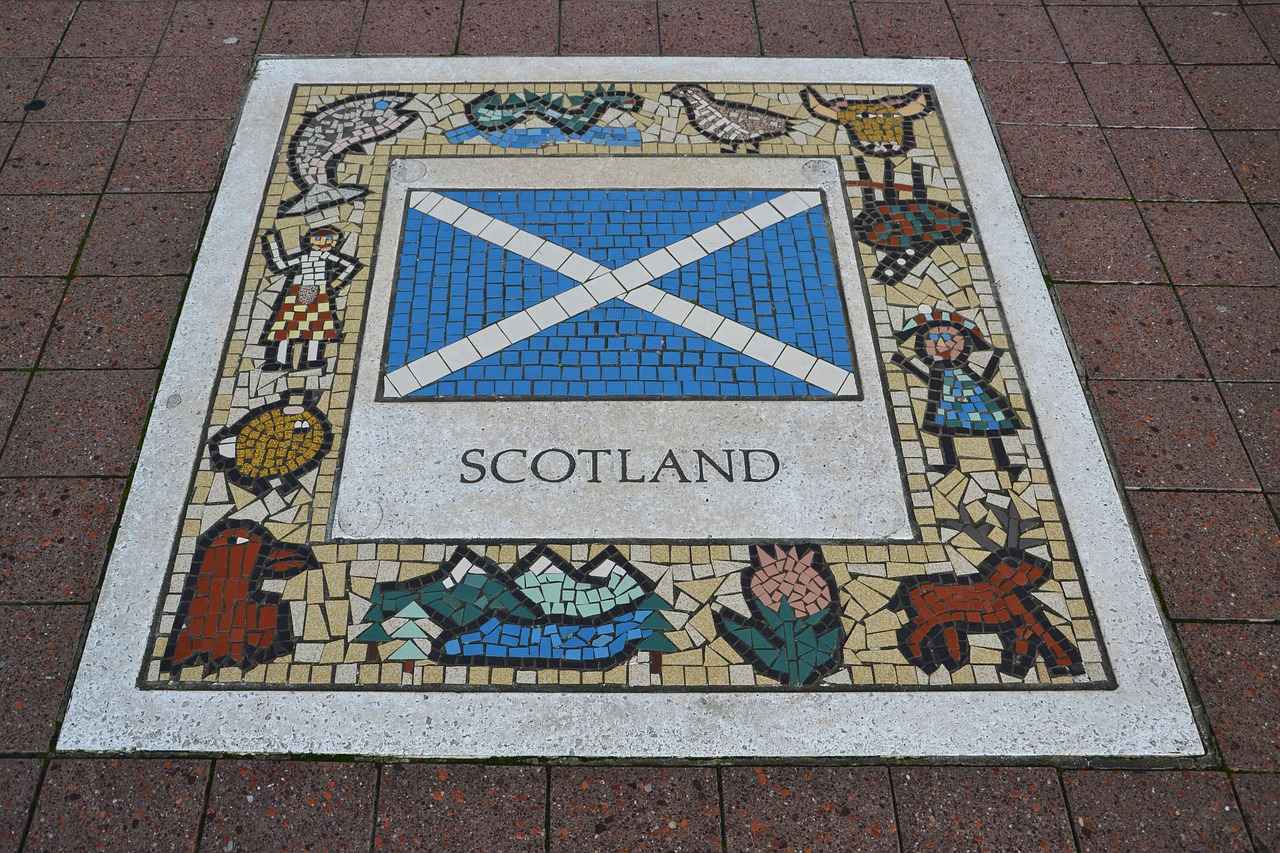
How Do Celtic Symbols Promote Spiritual Healing?
Celtic symbols, with their intricate designs and rich history, are often regarded as powerful emblems of healing and spiritual growth. These symbols are deeply embedded in Celtic culture, believed to carry healing properties that can enhance well-being and foster a sense of connection with the universe. This section explores the ways in which Celtic symbols are utilized for healing purposes, offering insights into their significance and application.
The healing properties attributed to Celtic symbols stem from their connection to nature, spirituality, and the cycle of life. Each symbol is thought to resonate with specific energies that can promote emotional and physical healing. For instance, the Tree of Life symbolizes growth and interconnectedness, reminding individuals of their place within the larger tapestry of existence. By meditating on this symbol, one can foster a sense of balance and harmony.
Celtic symbols are often incorporated into various healing practices, including meditation, energy work, and holistic therapies. Practitioners may use these symbols as focal points during meditation, allowing individuals to connect with their deeper selves and access healing energies. The Celtic Knot, for example, is frequently used to signify the endless cycle of life and the interconnectedness of all beings, providing a sense of peace and continuity.
Yes, many individuals find that incorporating Celtic symbols into their meditation practices enhances their experiences. By visualizing or holding a piece of jewelry adorned with a Celtic symbol, such as the Triquetra, practitioners can create a sacred space that fosters spiritual alignment. This symbol, representing the unity of mind, body, and spirit, serves as a reminder of the balance necessary for holistic healing.
Creating personal connections with Celtic symbols can significantly enhance their spiritual impact. Individuals often choose symbols that resonate with their personal journeys or experiences, allowing them to imbue their jewelry with meaning. For instance, someone who has overcome adversity may find strength in the Endless Knot, using it as a source of inspiration and resilience. By wearing or meditating on these symbols, individuals can cultivate a deeper sense of purpose and healing.
Celtic symbols also play a vital role in energy healing practices. Healers may incorporate these symbols into their sessions, using them to channel healing energies and facilitate energetic shifts. The Claddagh symbol, representing love, loyalty, and friendship, can be particularly powerful in emotional healing, helping individuals release negative emotions and foster positive relationships.
Absolutely, Celtic symbols are often used in rituals aimed at healing and spiritual growth. These rituals may involve lighting candles, creating altars, or performing specific ceremonies that honor the symbols’ meanings. For example, creating a ritual around the Celtic Cross can invite divine protection and guidance, aiding in the healing process.
In summary, Celtic symbols serve as profound tools for healing and spiritual enhancement. By understanding their meanings and incorporating them into various practices, individuals can harness their energies to foster well-being and personal growth. Whether through meditation, personal connections, or energy work, the rich symbolism of Celtic designs continues to inspire and heal.
Using Symbols in Meditation Practices
In the realm of spirituality, meditation serves as a profound tool for self-discovery and inner peace. Many practitioners enhance their meditation experiences by incorporating Celtic symbols, which are rich in history and meaning. This section delves into how these symbols can be utilized for spiritual alignment and healing, offering insights into their significance and practical applications.
Celtic symbols are intricate designs that represent various aspects of life, nature, and spirituality. Each symbol carries its own unique meaning, making them powerful tools for meditation. By understanding these meanings, practitioners can deepen their meditation experience and foster a stronger connection to their spiritual selves.
Integrating Celtic symbols into meditation practices can significantly enhance the experience. Here are some ways to incorporate these symbols:
- Visual Focus: Use a Celtic symbol as a focal point during meditation. This could be a drawing, a piece of jewelry, or a digital image. Concentrating on the symbol can help clear the mind and deepen the meditative state.
- Symbolic Affirmations: Pair your meditation with affirmations related to the symbol’s meaning. For example, if meditating with the Tree of Life, affirm your connection to growth and interconnectedness.
- Energy Channeling: Many believe that Celtic symbols carry specific energies. Visualizing the energy of the symbol flowing through you can facilitate healing and spiritual alignment.
Several Celtic symbols are particularly effective for meditation:
- Celtic Knot: Representing eternity and interconnectedness, the Celtic knot can help remind practitioners of the cyclical nature of life.
- Triquetra: This symbol embodies the unity of mind, body, and spirit, making it ideal for those seeking balance.
- Spiral: The spiral symbolizes growth and evolution, perfect for those on a journey of personal development.
To maximize the benefits of incorporating Celtic symbols into your practice, consider creating a dedicated meditation space. This space can include:
- Decorative Elements: Incorporate symbols through artwork, crystals, or jewelry. Surrounding yourself with these symbols can enhance their energy.
- Lighting: Use soft lighting or candles to create a calming atmosphere that promotes relaxation and focus.
- Sound: Consider playing soft Celtic music or nature sounds to enrich your meditation experience.
Each individual’s relationship with Celtic symbols can vary. Personalizing your approach can enhance their spiritual impact:
- Journaling: Keep a journal to document your experiences and feelings associated with specific symbols.
- Crafting: Create your own representations of symbols through art or crafts, making the symbols more meaningful to you.
- Rituals: Develop rituals that incorporate the symbols into your daily life, reinforcing their significance.
Incorporating Celtic symbols into your meditation practice can lead to profound spiritual alignment and healing. By understanding their meanings and personalizing your approach, you can create a deeply enriching meditation experience that fosters growth, balance, and inner peace.
Creating Personal Connections with Symbols
Creating personal connections with Celtic symbols can significantly enhance their spiritual impact. These symbols, steeped in rich history and cultural significance, can serve as powerful tools for self-expression and spiritual growth. By personalizing these symbols, individuals can forge a deeper bond with their heritage and the meanings behind the designs.
The act of personalizing Celtic symbols allows individuals to infuse their unique experiences and beliefs into the designs. This not only enhances the aesthetic appeal of the jewelry but also deepens the spiritual connection. When a symbol resonates personally, it becomes a source of strength and inspiration.
- Choosing Colors: Colors play a crucial role in the symbolism of Celtic jewelry. Selecting gemstones or materials that hold personal significance can amplify the meaning of the symbol. For instance, choosing emerald for its association with growth and renewal can enhance the spiritual connection of a Celtic Knot.
- Incorporating Initials or Names: Adding initials or names to a piece of jewelry can make it uniquely yours. This personal touch can transform a standard design into a cherished keepsake, representing loved ones or significant milestones in your life.
- Combining Symbols: Many individuals choose to combine multiple Celtic symbols in one piece of jewelry. For example, merging the Tree of Life with a Celtic Cross can symbolize balance and spirituality, representing both personal growth and faith.
- Engraving Personal Messages: Engraving a meaningful quote or date onto a piece of jewelry can create a powerful reminder of your journey. This practice not only personalizes the item but also serves as a daily affirmation of your values and beliefs.
When Celtic symbols are personalized, they resonate more deeply with the wearer. This emotional attachment can lead to enhanced spiritual experiences. For instance, wearing a piece of jewelry that represents a significant life event can serve as a reminder of resilience and strength during challenging times.
Celtic jewelry can act as a focal point during meditation or spiritual practices. By wearing personalized symbols, individuals can channel their energies into the jewelry, allowing for a more profound meditation experience. This practice can help align one’s intentions with the spiritual meanings of the symbols.
Establishing rituals that involve your personalized Celtic jewelry can further enhance its spiritual significance. For example, wearing a specific piece during important life events or while practicing mindfulness can strengthen the bond between the symbol and your personal journey.
In summary, personalizing Celtic symbols can greatly enhance their spiritual impact, allowing individuals to create meaningful connections with their heritage and beliefs. By thoughtfully choosing designs, colors, and personal engravings, one can transform ordinary jewelry into powerful spiritual tools that resonate on a deeper level.
Frequently Asked Questions
- What are the most common Celtic symbols?
Celtic symbols include the Celtic knot, Claddagh ring, and Tree of Life. Each symbol is steeped in history and represents various aspects of life, nature, and spirituality, making them significant in jewelry design.
- What does the Celtic knot represent?
The Celtic knot symbolizes eternity and interconnectedness, showcasing the endless cycles of life. These intricate designs serve as a reminder of the bonds we share with each other and the universe.
- What is the meaning of the Claddagh ring?
The Claddagh ring is a traditional Irish symbol representing love, loyalty, and friendship. Its unique design features a heart, crown, and hands, each signifying important values in relationships.
- How is the Tree of Life used in jewelry?
The Tree of Life is a popular motif in jewelry, symbolizing growth, strength, and interconnectedness. Its designs often reflect personal journeys and the deep connections we share with nature and each other.
- How do Celtic symbols promote spiritual healing?
Celtic symbols are believed to carry healing properties, fostering well-being and spiritual growth. Many people incorporate these symbols into meditation practices to enhance their spiritual alignment.
